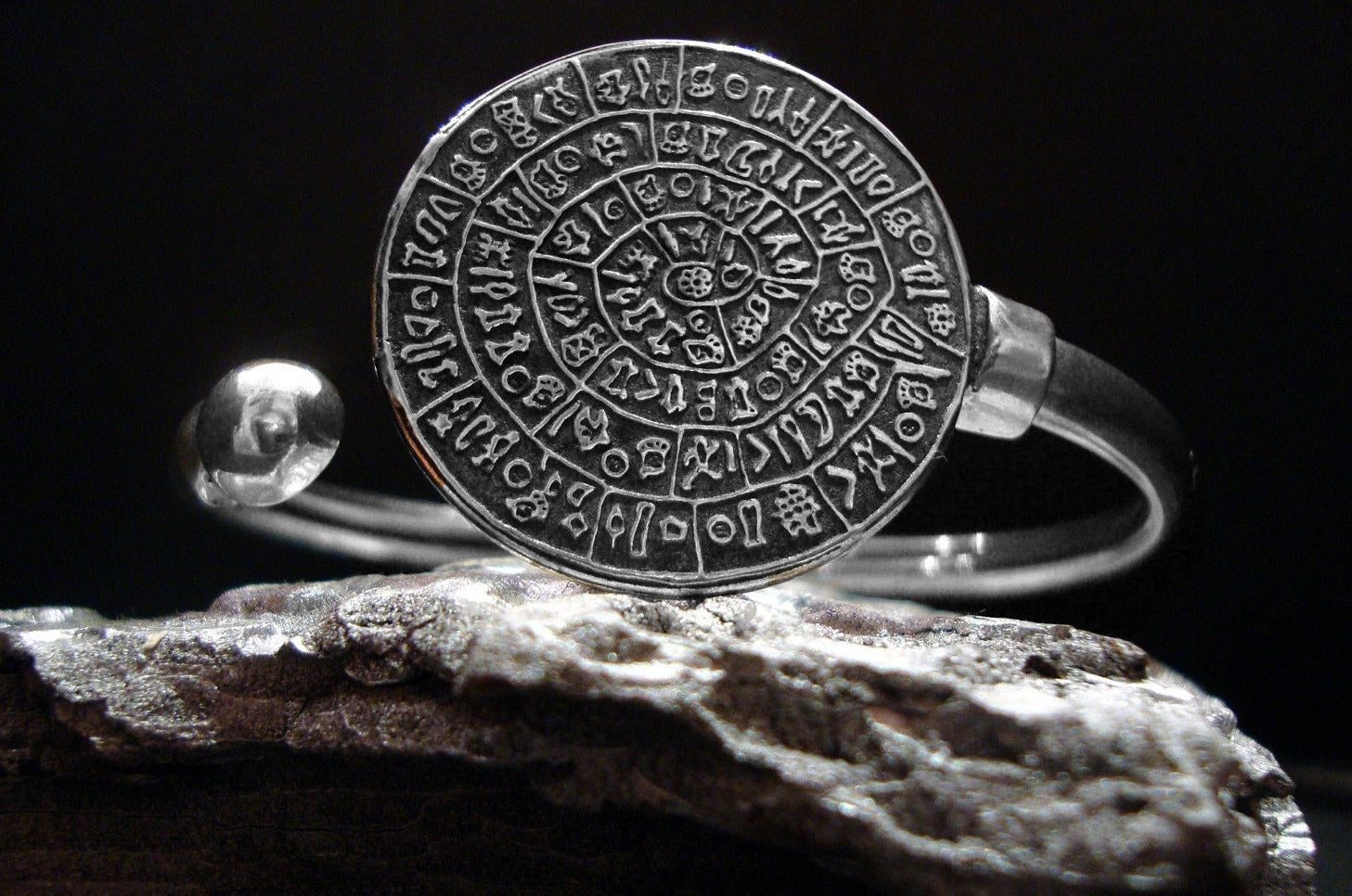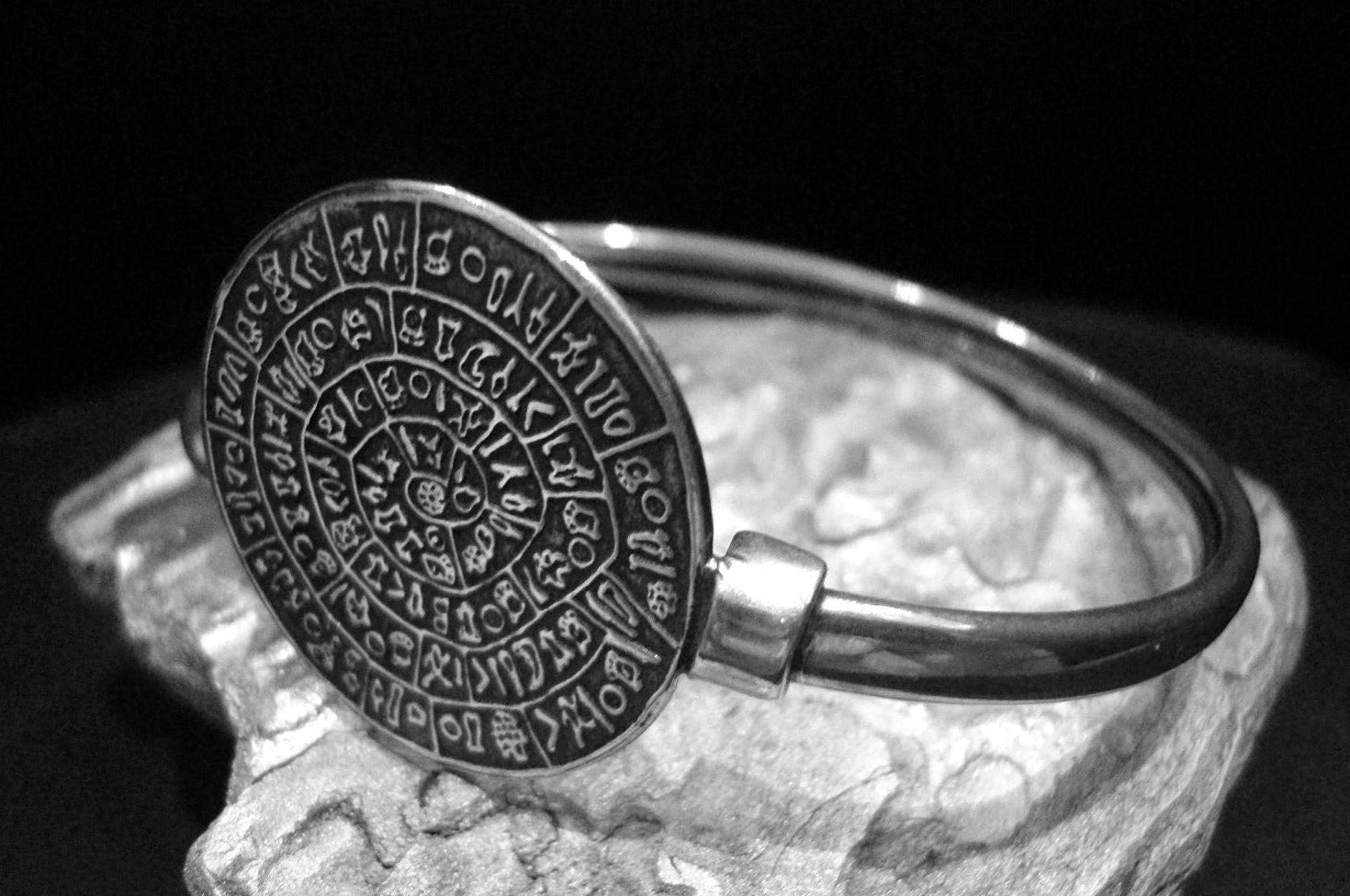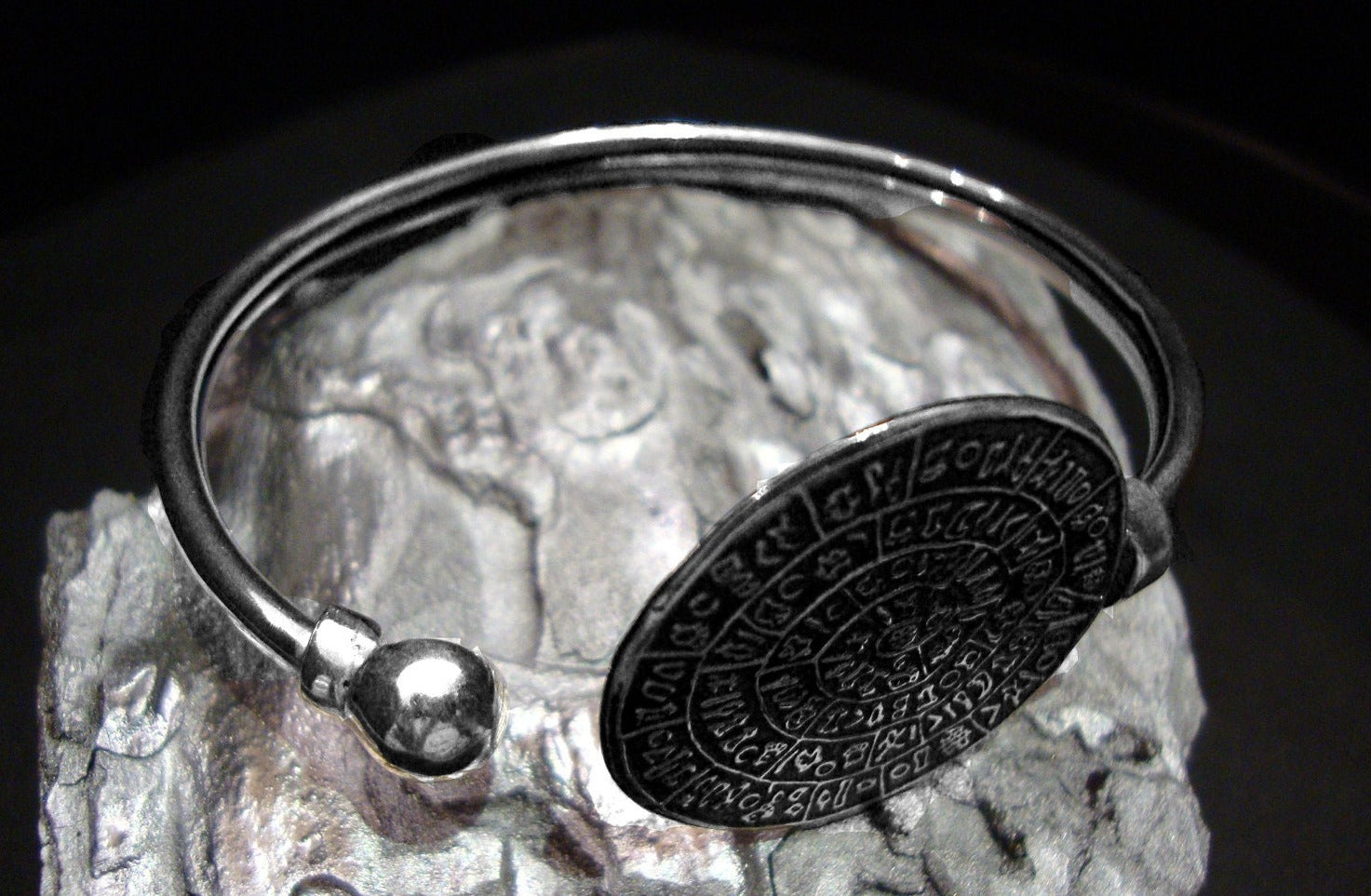Sirioti Jewelry
Phaistos Disc Silver Bracelet
Phaistos Disc Silver Bracelet
Couldn't load pickup availability
Phaistos Disc Silver Bracelet
The Phaistos Disc (also spelled Phaistos Disk, Phaestos Disc) is a disk of fired clay from the Minoan palace of Phaistos on the Greek island of Crete, possibly dating to the middle or late Minoan Bronze Age (2nd millennium BC). It is about 15 cm (5.9 in) in diameter and covered on both sides with a spiral of stamped symbols, making it one of the most famous mysteries of archaeology. This unique object is now on display at the archaeological museum of Heraklion.
The disc was discovered in 1908 by the Italian archaeologist Luigi Pernier in the Minoan palace-site of Phaistos, and features 241 tokens, comprising 45 unique signs, which were apparently made by pressing pre-formed hieroglyphic "seals" into a disc of soft clay, in a clockwise sequence spiraling towards the disc's center.
The Phaistos Disc captured the imagination of amateur and professional archeologists, and many attempts have been made to decipher the code behind the disc's signs. While it is not clear that it is a script, most attempted decipherments assume that it is; most additionally assume a syllabary, others an alphabet or logography. Attempts at decipherment are generally thought to be unlikely to succeed unless more examples of the signs are found, as it is generally agreed that there is not enough context available for a meaningful analysis.
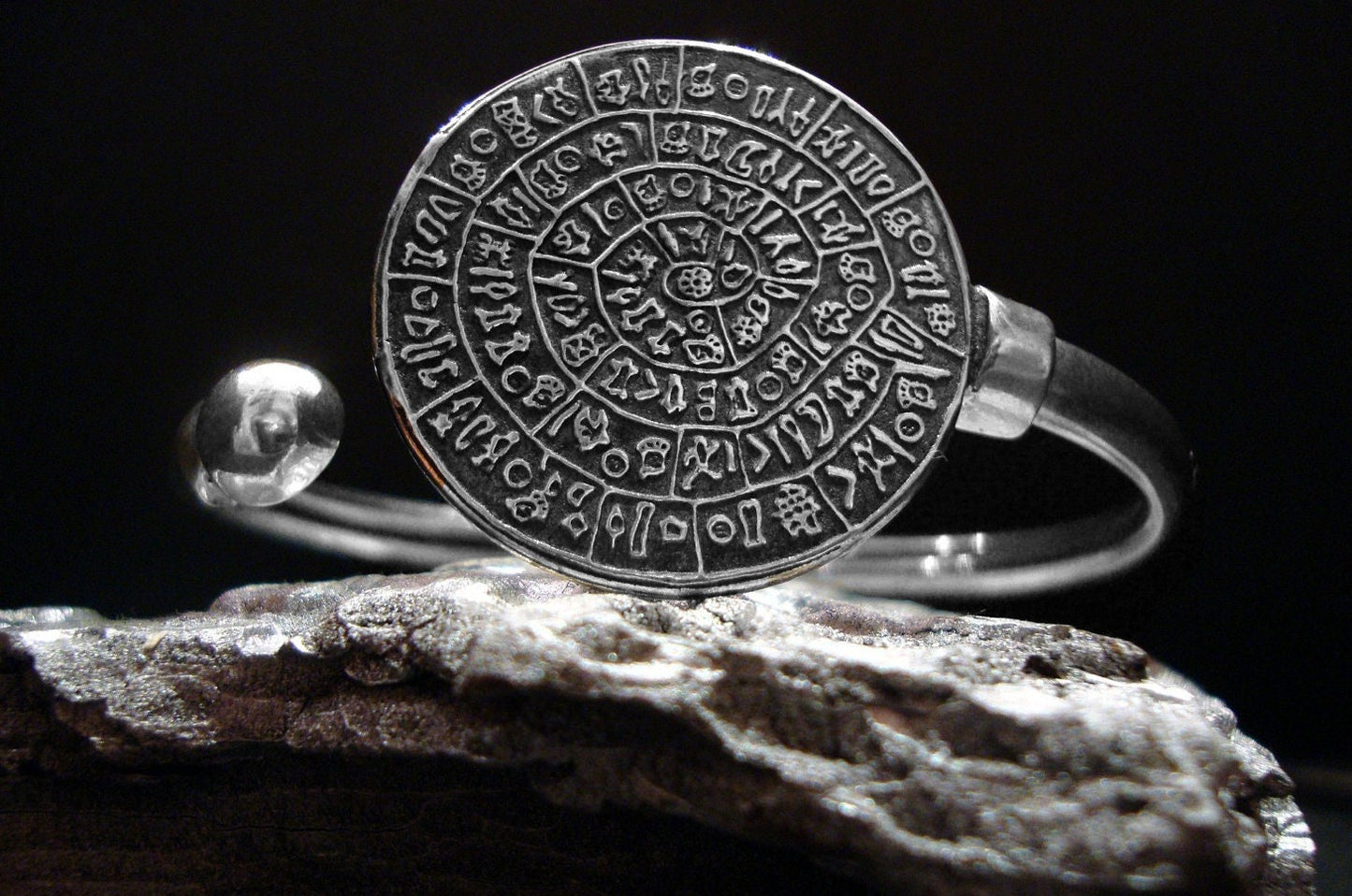
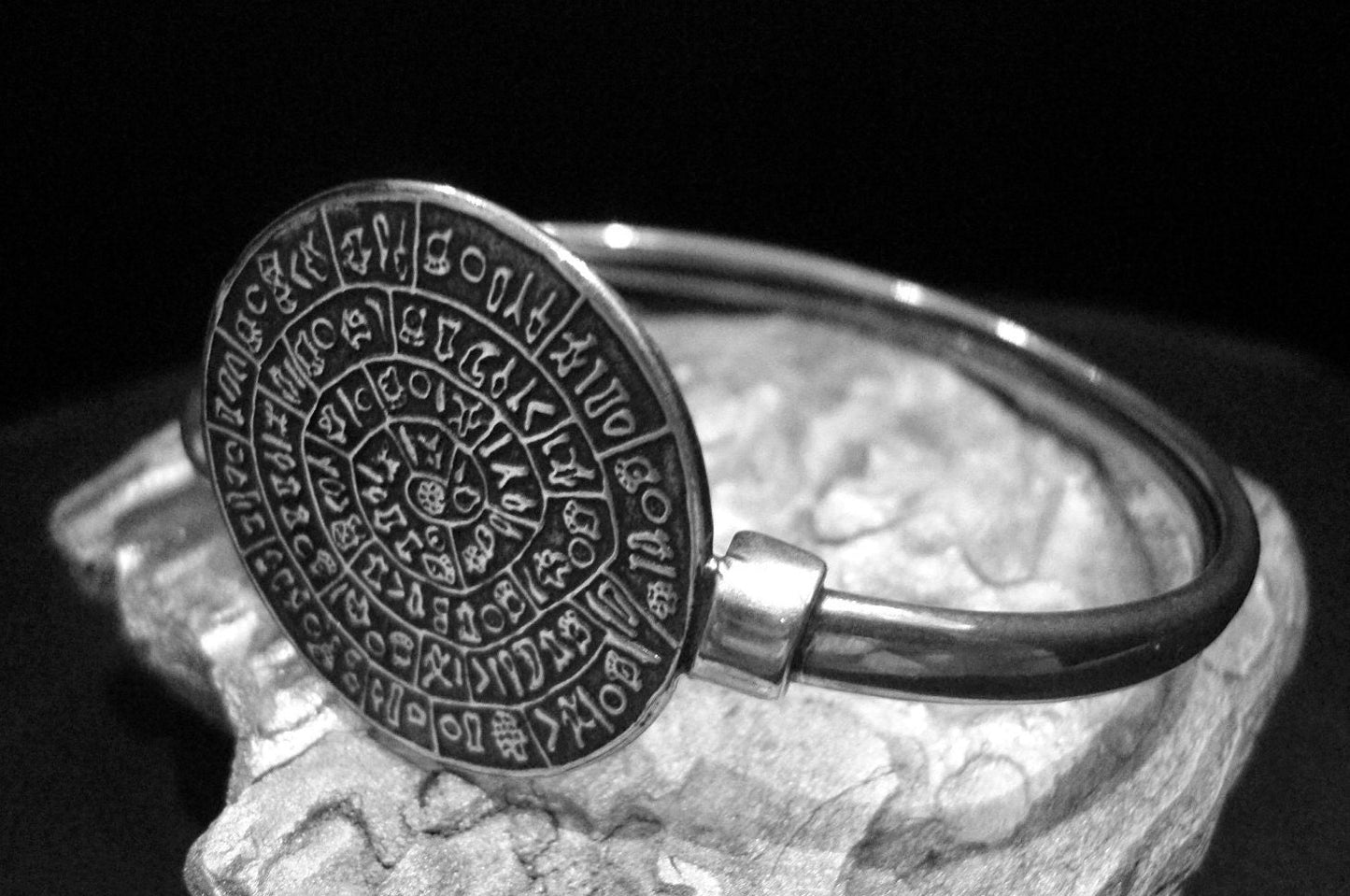
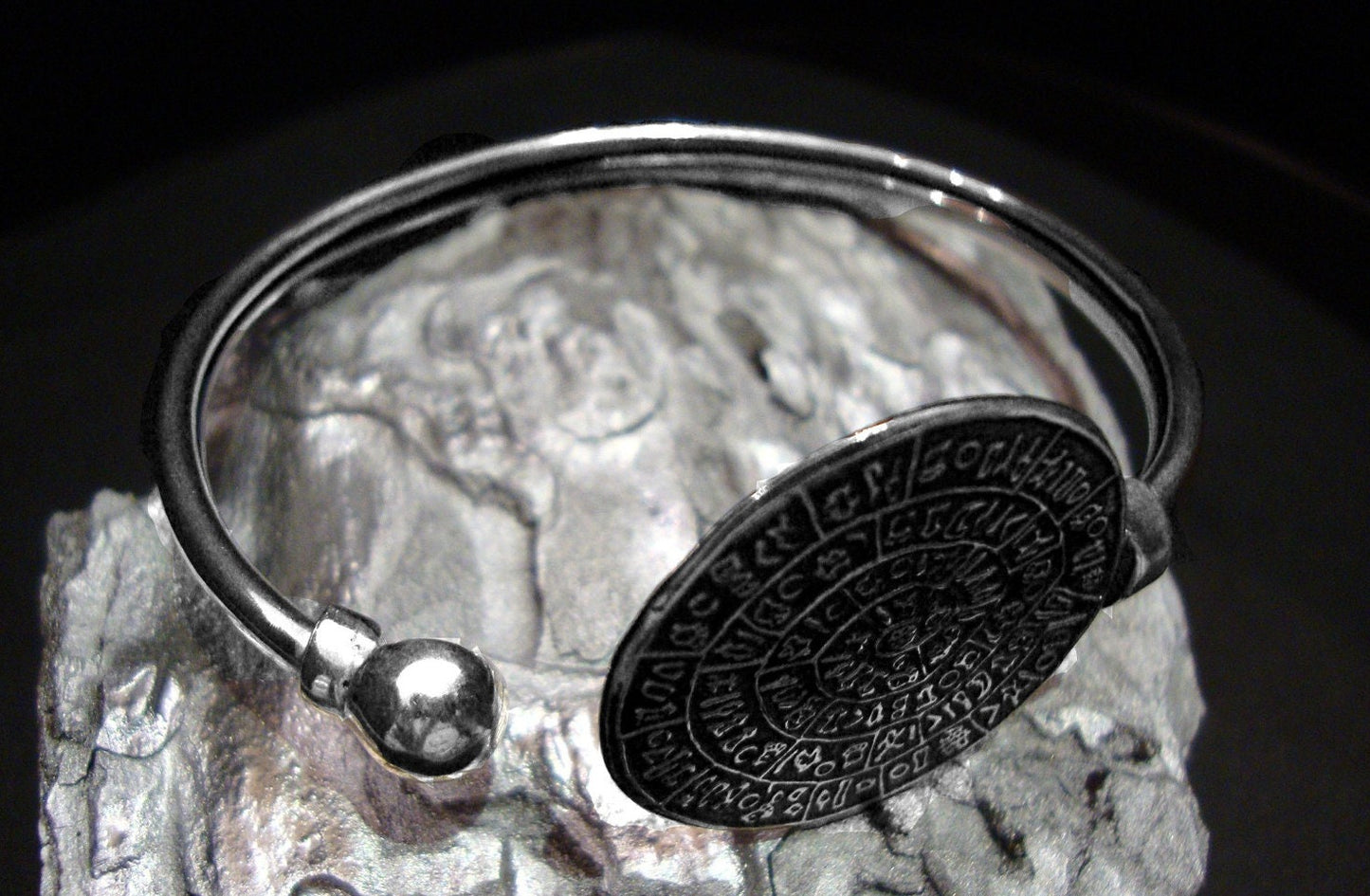
-
Free Shipping
Free shipping worldwide by Registered Post mail & tracking number.

